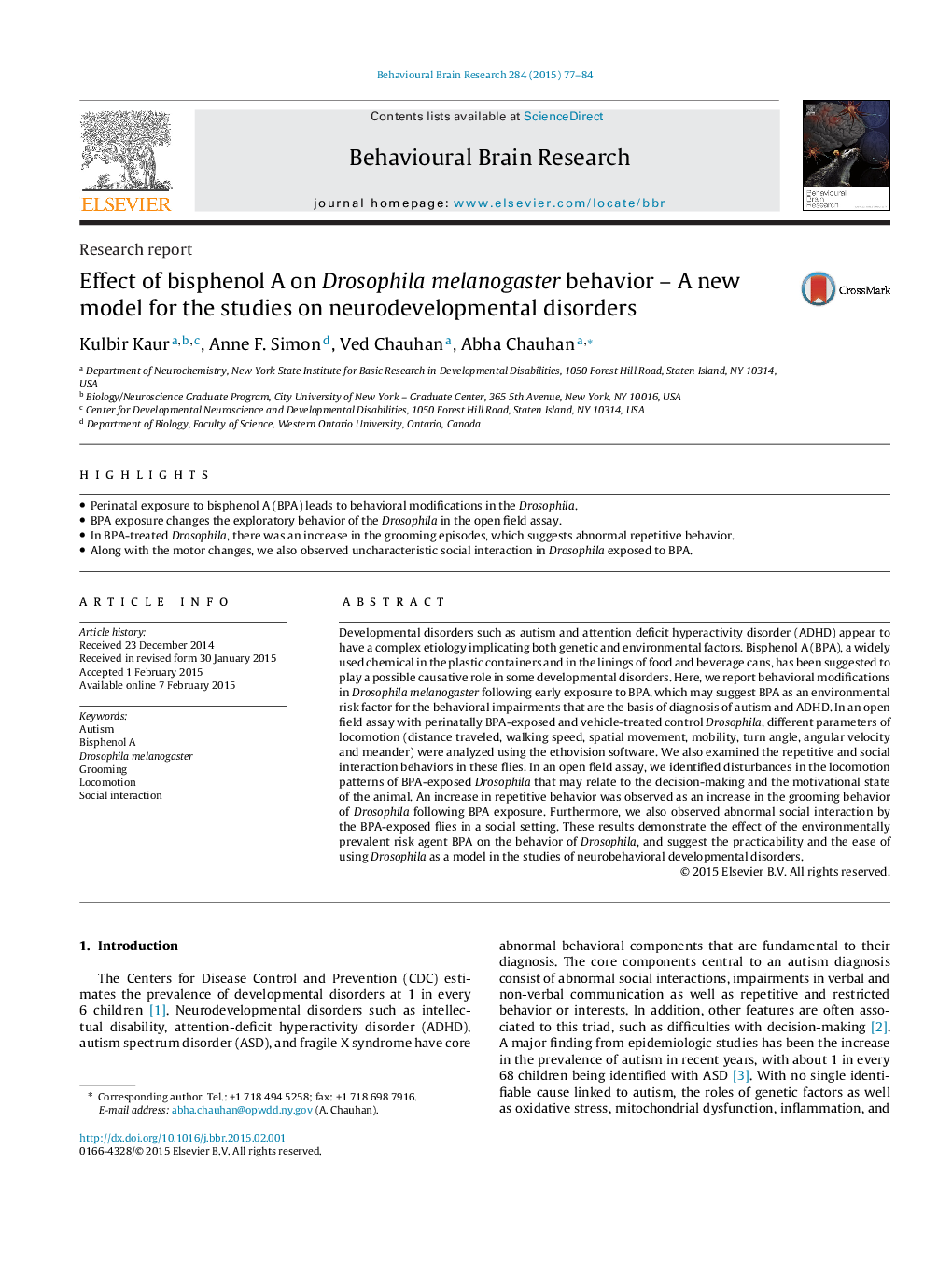| کد مقاله | کد نشریه | سال انتشار | مقاله انگلیسی | نسخه تمام متن |
|---|---|---|---|---|
| 6256770 | 1612948 | 2015 | 8 صفحه PDF | دانلود رایگان |

- Perinatal exposure to bisphenol A (BPA) leads to behavioral modifications in the Drosophila.
- BPA exposure changes the exploratory behavior of the Drosophila in the open field assay.
- In BPA-treated Drosophila, there was an increase in the grooming episodes, which suggests abnormal repetitive behavior.
- Along with the motor changes, we also observed uncharacteristic social interaction in Drosophila exposed to BPA.
Developmental disorders such as autism and attention deficit hyperactivity disorder (ADHD) appear to have a complex etiology implicating both genetic and environmental factors. Bisphenol A (BPA), a widely used chemical in the plastic containers and in the linings of food and beverage cans, has been suggested to play a possible causative role in some developmental disorders. Here, we report behavioral modifications in Drosophila melanogaster following early exposure to BPA, which may suggest BPA as an environmental risk factor for the behavioral impairments that are the basis of diagnosis of autism and ADHD. In an open field assay with perinatally BPA-exposed and vehicle-treated control Drosophila, different parameters of locomotion (distance traveled, walking speed, spatial movement, mobility, turn angle, angular velocity and meander) were analyzed using the ethovision software. We also examined the repetitive and social interaction behaviors in these flies. In an open field assay, we identified disturbances in the locomotion patterns of BPA-exposed Drosophila that may relate to the decision-making and the motivational state of the animal. An increase in repetitive behavior was observed as an increase in the grooming behavior of Drosophila following BPA exposure. Furthermore, we also observed abnormal social interaction by the BPA-exposed flies in a social setting. These results demonstrate the effect of the environmentally prevalent risk agent BPA on the behavior of Drosophila, and suggest the practicability and the ease of using Drosophila as a model in the studies of neurobehavioral developmental disorders.
Journal: Behavioural Brain Research - Volume 284, 1 May 2015, Pages 77-84